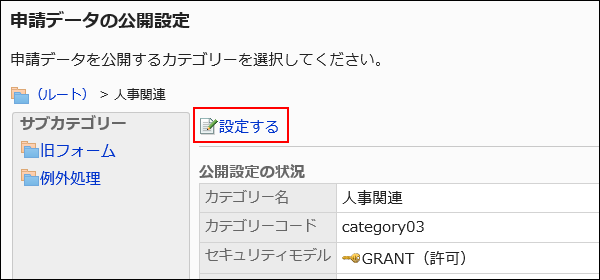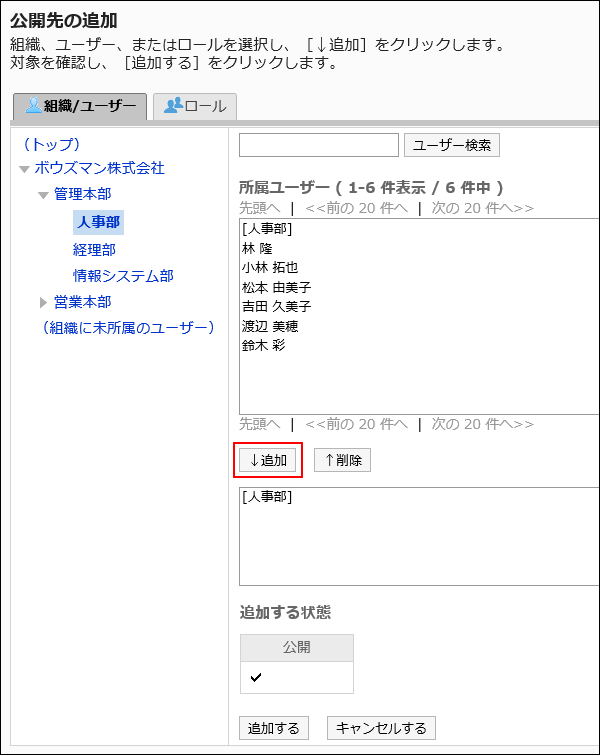Settings to Make Request Data Public
For each category, you can set to make request data public.
By making request data public, users other than the applicants or processors of the application routes can also view the request data in "Workflow (Public list)" screen.
Only request data completed by the final approver becomes public. Request data in progress is not get public.
You cannot set visibility to "(Uncategorized)".
In combination with the security model, you can set visibility you allow or disallow.
The default setting is set to "GRANT (Only users on list have access)". The request data does not shown to users other than the applicants or processors of the application route.
For information on visibility, refer to User Rights and Prioritized Access Permissions.
Setting Visibilities
The example shows how to make the request public when the security model is "GRANT (Only users on list have access)".
-
Click the administration menu icon (gear icon) in the header.
-
Click "System settings".
-
Select "Application settings" tab.
-
Click Workflow.
-
Click Make request public settings.
-
On the "Make request public settings" screen, select a category and click Edit.

-
On the "Public settings" screen, confirm that the security model is "GRANT (Only users on list have access)".
If the security model is set as "REVOKE (All users have access except users on list)", click "Change" to change the setting to "GRANT (Only users on list have access)". For details, refer to Changing the Security Model.
-
Click Add in the "Public settings" screen.

-
On the "Add new entry" screen, select a organization, user, or role to set them as a target to publish, and then click Add.
To select a role, switch the view to the Roles tab.
When you switch tabs after clicking Add, the selected organizations, users, or roles are cleared before you switch.
-
Confirm your settings and click Add.
Deleting Visibilities
Delete visibility settings set for categories.
If you delete visibility settings, actions that users can perform changes as follows depending on the security model:
- If the security model is "GRANT (Only users on list have access)":
Users who are deleted their visibility settings or users who belonged to the organizations or roles that are deleted deleted their visibility settings no longer be able to work with items they previously could. - If the security model is "REVOKE (All users have access except users on list)":
Users who are deleted their visibility settings or users who belonged to the organizations or roles that are deleted their visibility settings can now work with items they prohibited to use.
Selecting and Deleting Visibilities
Select visibility settings to delete.
-
Click the Administration menu icon (gear icon) in the header.
-
Click "System settings".
-
Select "Application settings" tab.
-
Click Workflow.
-
Click Make request public settings.
-
On the "Make request public settings" screen, select a category and click Edit.

-
On the "Public settings" screen, select the checkboxes of the organizations, users, or roles to delete, and then click "Delete".

-
Click Yes on the "Delete public settings" screen.
Deleting All Visibilities
Delete all visibility settings.
-
Click the Administration menu icon (gear icon) in the header.
-
Click "System settings".
-
Select "Application settings" tab.
-
Click Workflow.
-
Click Make request public settings.
-
On the "Make request public settings" screen, select a category and click Edit.

-
On the "Public settings" screen, click Delete all.

-
Click Yes on the "Delete all public settings" screen.